Description
***THIS IS NOT THE ACTUAL BOOK. YOU ARE BUYING the Test Bank in e-version of the following book***
Title: Test Bank for Brock Biology of Microorganisms 14th Edition Michael T Madigan Download
Edition: 14th Edition
ISBN-10: 0321897390
ISBN-13: 978-0321897398
– The test bank is what most professors use an a reference when making exams for their students, which means there’s a very high chance that you will see a very similar, if not exact the exact, question in the test!
– The file is either in pdf, doc, rtf or zipped in the package and can easily be read on PCs and Macs.
– Delivery is INSTANT. You can download the files IMMEDIATELY once payment is done.
We also faced similar difficulities when we were students, and we understand how you feel.
But now, with the Test Bank for Brock Biology of Microorganisms 14th Edition Michael T Madigan Download, you will be able to
* Anticipate the type of the questions that will appear in your exam.
* Reduces the hassle and stress of your student life.
* Improve your studying and also get a better grade!
* Get prepared for examination questions.
* Can save you time and help you understand the material.
This is the quality of service we are providing and we hope to be your helper.
Delivery is in the next moment. Test Bank is accurate.
If you have any questions, or would like a receive a sample chapter before your purchase, please contact us at inquiry@testbankcorp.com
Brock Biology of Microorganisms, 14e (Madigan et al.)
Chapter 1 Microorganisms and Microbiology
1.1 Multiple Choice Questions
1) Which of the following statements is FALSE?
A) Microbial cells exist as single cells.
B) Microbial cells carry out their life processes of growth independently.
C) Microbial cells include both bacteria and viruses.
D) Microbial cells exclude the cells of plants and animals.
Answer: C
Bloom’s Taxonomy: Knowledge
Chapter Section: 1.2
2) Basic microbiology can be used to
A) probe the fundamental processes of life.
B) study characteristics of cells of multicellular organisms.
C) model our understanding of cellular processes in multicellular organisms, including humans.
D) probe the fundamental processes of life, study characteristics of cells of multicellular organisms, and model our understanding of cellular processes in multicellular organisms, including humans.
Answer: D
Bloom’s Taxonomy: Application
Chapter Section: 1.1
3) Applied microbiology deals with important practical problems in
A) medicine.
B) agriculture.
C) industry.
D) medicine, agriculture, and industry.
Answer: D
Bloom’s Taxonomy: Application
Chapter Section: 1.1
4) The largest mass of living material on Earth comes from
A) microorganisms.
B) plants.
C) animals.
D) plants and animals together.
Answer: A
Bloom’s Taxonomy: Knowledge
Chapter Section: 1.1
5) Differential selection and reproduction of phenotypes occurs during a process called
A) cellular differentiation.
B) evolution.
C) growth.
D) transformation.
Answer: B
Bloom’s Taxonomy: Knowledge
Chapter Section: 1.2
6) In what/which domain(s) of life is/are microorganisms represented?
A) Archaea
B) Bacteria
C) Eukarya
D) Archaea, Bacteria, and Eukarya
Answer: D
Bloom’s Taxonomy: Knowledge
Chapter Section: 1.3
7) Determine which outcome is LEAST likely for a microorganism being motile.
A) avoidance of predation by bacteriovores
B) maintaining osmotic balance within a salt gradient
C) movement towards growth substrates
D) transfer of plasmids to progeny
Answer: D
Bloom’s Taxonomy: Evaluation
Chapter Section: 1.2
8) Protein catalysts involved in the acceleration of the rate of chemical reactions are called
A) catalytic converters.
B) growth agents.
C) evolutionary molecules.
D) enzymes.
Answer: D
Bloom’s Taxonomy: Knowledge
Chapter Section: 1.2
9) Regarding early life on Earth,
A) microbial life existed for billions of years before plant and animal life.
B) microbial life existed long before animals but has been around for about the same amount of time as plants.
C) microbial life, plant life, and animal life all appeared at about the same time.
D) it is impossible to determine which type of life first appeared.
Answer: A
Bloom’s Taxonomy: Knowledge
Chapter Section: 1.3
10) Most prokaryotic cells reside
A) on Earth’s surface.
B) in lakes, rivers, and oceans.
C) in and on nonprokaryotic organisms (including humans and other animals).
D) in the oceanic and terrestrial subsurfaces.
Answer: D
Bloom’s Taxonomy: Knowledge
Chapter Section: 1.4
11) The person who described the “wee animalcules” was
A) Robert Hooke.
B) Antoni van Leeuwenhoek.
C) Louis Pasteur.
D) Ferdinand Cohn.
Answer: B
Bloom’s Taxonomy: Knowledge
Chapter Section: 1.6
12) Fannie Hesse is credited with giving ________ the idea to use agar as a solidifying agent.
A) Louis Pasteur
B) Ferdinand Cohn
C) Robert Koch
D) Sergei Winogradsky
Answer: C
Bloom’s Taxonomy: Knowledge
Chapter Section: 1.8
13) Which of the following is/are characteristic of ALL cellular organisms?
A) communication
B) evolution
C) motility
D) communication, evolution, and motility
Answer: B
Bloom’s Taxonomy: Knowledge
Chapter Section: 1.2
14) Deduce why viruses are excluded from the ribosomal RNA-based tree of life.
A) Some viruses contain multiple strands of RNA.
B) Their genetic elements cannot be sequenced.
C) They can infect other organisms, which complicates the genetic comparisons.
D) They lack ribosomal RNA.
Answer: D
Bloom’s Taxonomy: Evaluation
Chapter Section: 1.4
15) Which statement is TRUE?
A) Populations are assemblages of microbial communities.
B) Microbial communities are assemblages of populations.
C) Habitats are assemblages of microbial communities.
D) Populations are assemblages of habitats.
Answer: B
Bloom’s Taxonomy: Knowledge
Chapter Section: 1.2
16) Louis Pasteur developed the vaccine(s) for
A) anthrax.
B) fowl cholera.
C) rabies.
D) anthrax, fowl cholera, and rabies.
Answer: D
Bloom’s Taxonomy: Knowledge
Chapter Section: 1.7
17) The discovery of antibiotics and other important chemicals led to the field of
A) industrial microbiology.
B) agricultural microbiology.
C) marine microbiology.
D) aquatic microbiology.
Answer: A
Bloom’s Taxonomy: Knowledge
Chapter Section: 1.5
18) Microbial sterilization is used to
A) decrease the possibility of contaminants growing in a culture.
B) kill bacteria but not necessarily viruses or other microbes.
C) kill all microbes in or on objects.
D) clean a work area.
Answer: C
Bloom’s Taxonomy: Knowledge
Chapter Section: 1.7
19) Transparent double-sided dishes used for growing microbes are most commonly called
A) Petri dishes.
B) baker dishes.
C) sterilization plates.
D) culture medium plates.
Answer: A
Bloom’s Taxonomy: Knowledge
Chapter Section: 1.8
20) Microbes playing a role in nitrogen fixation in plants live in ________, while those playing a role in the digestive tract of certain herbivores live in ________.
A) rumens / nodules
B) nodules / rumens
C) nodules / fortrans
D) fortrans / rumens
Answer: B
Bloom’s Taxonomy: Knowledge
Chapter Section: 1.5
21) Which of the following is NOT an accomplishment of Louis Pasteur?
A) determined that the alcohol-making process was mediated by microbial fermentation and thus refuted the theory of spontaneous generation
B) developed enrichment culture techniques
C) developed heat sterilization techniques that involved the creation of a specialized swan-necked flask
D) developed the first rabies vaccine and treated thousands of individuals
Answer: B
Bloom’s Taxonomy: Knowledge
Chapter Section: 1.7
22) The theory of spontaneous generation was refuted by the work of
A) Louis Pasteur.
B) Robert Koch.
C) Robert Hooke.
D) Antoni van Leeuwenhoek.
Answer: A
Bloom’s Taxonomy: Knowledge
Chapter Section: 1.7
23) A Pasteur flask has a(n)
A) swan neck to prevent particulate matter from getting into the main body of the flask.
B) double neck so two substances may be added at the same time.
C) secondary opening at the base to allow for drainage.
D) inverted upper edge to prevent spillage while swirling.
Answer: A
Bloom’s Taxonomy: Knowledge
Chapter Section: 1.7
24) Predict how Pasteur’s conclusions on spontaneous generation with swan flasks would have changed if he worked with and maintained the flasks in a sterile laminar flow hood.
A) Sterilization of the swan flask solutions would not have been necessary to reject spontaneous generation. If he did sterilize the flasks, the spontaneous generation hypothesis would have been supported.
B) His incubation times would not have been sufficient to refute spontaneous generation.
C) Pasteur’s flasks never would have putrefied, and the experiment would not have refuted spontaneous generation.
D) Viruses would have still been present, and his conclusion would have been unchanged.
Answer: C
Bloom’s Taxonomy: Evaluation
Chapter Section: 1.7
25) A pure culture
A) is sterile.
B) is a population of identical cells.
C) is made of a clearly defined chemical medium.
D) contains one microbial cell.
Answer: B
Bloom’s Taxonomy: Knowledge
Chapter Section: 1.8
26) Martinus Beijerinck was the first to isolate
A) green algae.
B) certain nitrogen-fixing root nodule bacteria.
C) certain sulfate-reducing bacteria.
D) green algae, certain nitrogen-fixing root nodule bacteria, and certain sulfate-reducing bacteria.
Answer: D
Bloom’s Taxonomy: Knowledge
Chapter Section: 1.9
27) Chemolithotrophy involves
A) oxidation of organic compounds.
B) oxidation of inorganic compounds.
C) reduction of organic compounds.
D) metabolic autotrophy.
Answer: B
Bloom’s Taxonomy: Knowledge
Chapter Section: 1.9
28) Developments in the fields of immunology and medical microbiology were practical extensions of the work of
A) Sergei Winogradsky.
B) Antoni van Leeuwenhoek.
C) Joseph Lister.
D) Robert Koch.
Answer: D
Bloom’s Taxonomy: Comprehension
Chapter Section: 1.8
29) Microbial control in wastewaters would most logically be a part of
A) microbial genetics.
B) aquatic microbiology.
C) medical microbiology.
D) bacterial energetics.
Answer: B
Bloom’s Taxonomy: Comprehension
Chapter Section: 1.10
30) Robert Koch contributed to the field of microbiology by being the first person to
A) develop the tuberculin test.
B) formulate four postulates for definitively linking a specific microorganism to a specific disease.
C) use agar as a solidifying agent in growth media.
D) develop the tuberculin test, formulate four postulates for definitively linking a specific microorganism to a specific disease, and use agar as a solidifying agent in growth media.
Answer: D
Bloom’s Taxonomy: Knowledge
Chapter Section: 1.8
31) The science of grouping and classifying microorganisms is known as
A) microbial physiology.
B) proteomics.
C) metabolomics.
D) microbial systematics.
Answer: D
Bloom’s Taxonomy: Knowledge
Chapter Section: 1.10
32) Mycobacterium tuberculosis is very difficult to stain because of the
A) presence of ribosomes in the cytoplasm.
B) location of the DNA within the cell.
C) large amounts of a waxy lipid present in its cell wall.
D) lack of a cell wall.
Answer: C
Bloom’s Taxonomy: Knowledge
Chapter Section: 1.8
33) Louis Pasteur’s most famous success was his work on
A) Mycobacterium tuberculosis.
B) the rabies vaccine.
C) optical isomers.
D) cultivation of E. coli.
Answer: B
Bloom’s Taxonomy: Knowledge
Chapter Section: 1.8
34) Microorganisms play key roles in the cycling of important nutrients in plant nutrition, particularly those of
A) carbon.
B) nitrogen.
C) sulfur.
D) carbon, nitrogen, and sulfur.
Answer: D
Bloom’s Taxonomy: Knowledge
Chapter Section: 1.5
35) Microbial ecology is the study of
A) microbial processes in the rhizosphere that benefit plant growth.
B) the diversity and activities of microorganisms.
C) the grouping and classifying of microorganisms.
D) microorganisms in their natural environments.
Answer: D
Bloom’s Taxonomy: Knowledge
Chapter Section: 1.10
36) The structure that confers structural strength on the cell is known as the
A) cytoplasmic membrane.
B) cell wall.
C) ribosome.
D) cytoplasm.
Answer: B
Bloom’s Taxonomy: Knowledge
Chapter Section: 1.2
37) Which scientific objective is LEAST related to microbial genetics?
A) determining the ancestral origin of a recently discovered bacterium
B) identifying mutations in a bacterial population
C) identifying quorum sensing interactions among bacteria
D) manipulating a microorganism for bioremediation
Answer: C
Bloom’s Taxonomy: Analysis
Chapter Section: 1.10
38) A microbial cell’s membrane is considered ________, because its internal constituents are maintained within the cell. However, it also imports and exports other molecules in response to its environment.
A) differential
B) microselective
C) rigid
D) semipermeable
Answer: D
Bloom’s Taxonomy: Knowledge
Chapter Section: 1.2
39) Some microorganisms can undergo ________ in which various cell types can become specialized and arise from one parent cell type.
A) differentiation
B) genetic exchange
C) maturation
D) mutagensis
Answer: A
Bloom’s Taxonomy: Knowledge
Chapter Section: 1.2
40) Cyanobacteria and purple bacteria both obtain energy from light. However, only the ________ are capable of releasing ________.
A) cyanobacteria / organic compounds
B) cyanobacteria / oxygen
C) purple bacteria / organic compounds
D) purple bacteria / oxygen
Answer: B
Bloom’s Taxonomy: Comprehension
Chapter Section: 1.3
41) The process whereby microorganisms are used to help clean up pollution created by human activities is known as
A) bioaugmentation.
B) biodegradation.
C) bioengineering.
D) bioremediation.
Answer: D
Bloom’s Taxonomy: Knowledge
Chapter Section: 1.5
42) An ecosystem includes ________ along with ________.
A) macroorganisms / microorganisms
B) living organisms / their chemical and physical environments
C) pathogenic organisms / non-pathogenic organisms
D) single celled organisms / multi-cellular organisms
Answer: B
Bloom’s Taxonomy: Knowledge
Chapter Section: 1.4
43) Robert Koch received the 1905 Nobel Prize in Physiology or Medicine for
A) developing a smallpox vaccination.
B) identifying Mycobacterium tuberculosis as the causative agent of tuberculosis.
C) making an effective rabies vaccine.
D) developing a smallpox vaccination, identifying Mycobacterium tuberculosis as the causative agent of tuberculosis, and making an effective rabies vaccine.
Answer: B
Bloom’s Taxonomy: Knowledge
Chapter Section: 1.8
44) Bacillus anthracis deficient in its ability to differentiate would not be able to
A) chemotax towards growth substrates.
B) create vessicles.
C) form endospores.
D) grow without additional supplemented nutrients.
Answer: C
Bloom’s Taxonomy: Synthesis
Chapter Section: 1.2
45) Microbial biochemistry involves the discovery of microbial ________ and the ________ they perform.
A) biomolecules / functions
B) enzymes / catalyses
C) metabolic pathways / reactions
D) biomolecules, enzymes, and metabolic pathways / functions
Answer: D
Bloom’s Taxonomy: Knowledge
Chapter Section: 1.10
46) Major classes of macromolecules present in all living microorganisms include
A) amino acids, carbohydrates, lipids, and nucleic acids.
B) cell wall, cytoplasmic membrane, nucleoid, and ribosomes.
C) genes, proteins, and vitamins.
D) inorganic and organic compounds.
Answer: A
Bloom’s Taxonomy: Knowledge
Chapter Section: 1.2

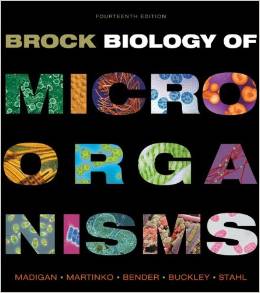
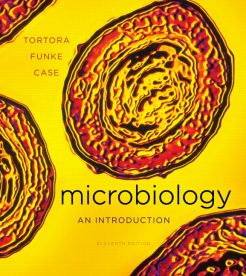
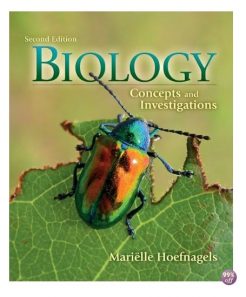
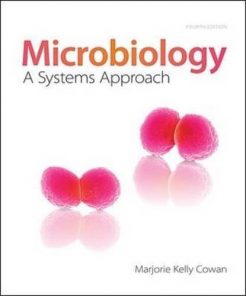
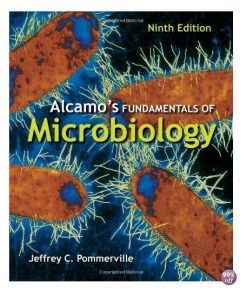

Reviews
There are no reviews yet.